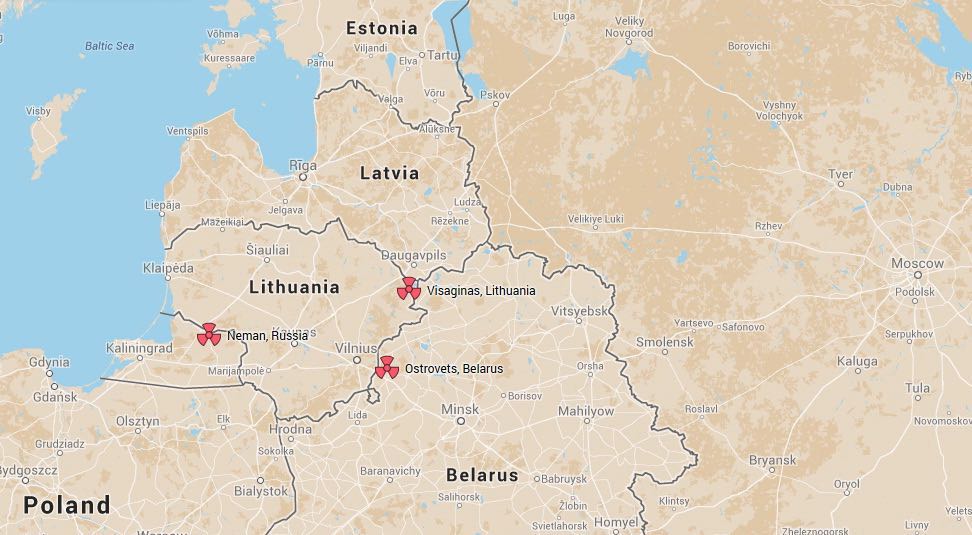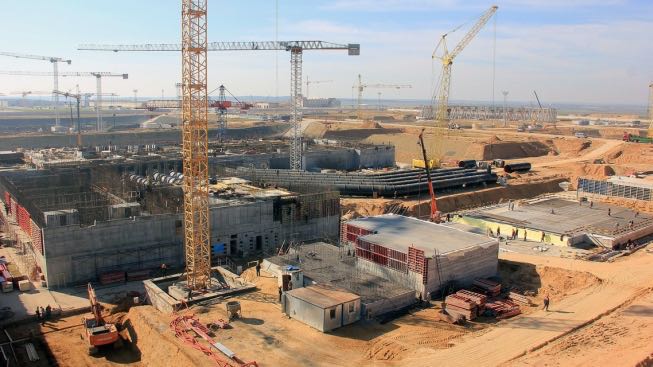Belarus limits the international safety inspections and doesn't provide full information during the construction of the Ostrovets nuclear power plant. After several incidents Lithuania and the other Baltic States decided at forehand to boycot electricity from the Belarusian power plant, thus signalling their concern to the rest of Europe and the International Atomic Energy Agency.
Just over 30 years after the Chernobyl nuclear disaster, which saw Belarus lose a quarter of its territory due to nuclear contamination, the former Soviet republic is set to see its first nuclear power station enter operation in one and a half year’s time from now.

The location in the Belarusian town of Ostrovets - a mere 50 kilometres from Lithuania’s capital Vilnius - is understandably giving its neighbour the jitters. To make matters worse, the construction of the plant has been mired by a series of mishaps and incidents, sparking major concerns over the safety of the installation.
With Belarusian authorities not budging and full inspections remaining elusive, the Lithuanian government has resorted to taking active steps to protect the country against the plant.
Playing the silent game
In August last year, news emerged that a crane had dropped the 330 tonne heavy reactor from a height of 4 metres during a test lift. If dropping a nuclear reactor was not bad enough in itself, the Belarusian authorities’ attempts to deny or otherwise keep silent on the matter for weeks on end sparked eerie memories of how the Soviets handled the Chernobyl disaster of 1986.
‘We never get any information, or we hear something only a month after it happened’, says Darius Degutis, Lithuania’s ambassador at large for the issues related to the Ostrovets Nuclear Power Plant.
Russian state-owned company Rosatom, the nuclear plant’s main contractor, is complicit in playing the ‘silent game’ by first denying that the accident caused any damage to the reactor shell, only to change its story afterwards by offering to replace the shell. Adding to the concerns was another incident in February 2017, whereby the second reactor hit a power pillar during transport.
The incident could have caused significant tension and deformation, thus impacting on the safety of the reactor vessel. However, rather than properly investigating the impact, the vessel was hoisted into position on 1 April of this year.
Move along, nothing to see here
In order for the international community to be fully informed about the safety standards employed in the plant’s construction, the Lithuanian government has pressed for the International Atomic Energy Agency’s (IAEA) Site and External Events Design (SEED) mission to be invited for a full-scope review.
A full-scope review consists of a six-step assessment, involving reviews and inspections on site selection, environmental impact, design safety and numerous other aspects. A major problem thus far is that the Belarusian authorities limited the scope of the IAEA’s mission only to an assessment of the plant design’s safety.
This means that major verification steps pertaining to the choice of location, local geology and the plant’s environmental impact were skipped. According to Degutis, the location at Ostrovets is ‘known to have been seismically active in the past and no proper international assessment of the site’s location was ever carried out’.
 Ostrovets nuclear plant under construction. Photo: NPP Construction Belarus
Ostrovets nuclear plant under construction. Photo: NPP Construction Belarus
Other failures relate to the measuring of the population density around the site.
In doing so, Belarusian officials only assessed population density on the Belarusian side of the border, thus not taking into account that this density on the Lithuanian side is far higher and a third of the country’s population would be at risk in case of a meltdown.
By limiting the scope of the IAEA’s mission, the nuclear watchdog cannot comment on these kinds of issues. To make matters worse, the Belarusian government declared that it would itself perform the plant’s risk and safety assessment.
Given how the numerous incidents at the plant have been handled so far, it is questionable as to whether the Belarusian authorities can be trusted with performing these stress tests in full accordance with European specifications.
Baltic States resort to measures
After having attempted for several years to get the IAEA’s SEED mission full access to the site, the Lithuanian authorities have started to resort to different measures to guard themselves against the plant. In April of this year, the Lithuanian parliament adopted a law that forbids the purchase of electricity generated from a third country power plant that is constructed or operates in violation of international environmental and nuclear safety requirements.
Earlier this month, Lithuania, Estonia and Latvia also agreed to link their power systems to other EU members and, in that way, disconnect from the Soviet-era electricity network.Given that Belarus repeatedly signalled its intention to sell part of the electricity produced at Ostrovets in other European countries, the Baltic States have effectively deprived the plant from access to European electricity markets.
Although such actions qualify as last-resort measures, both decisions are entirely defensible when viewed in light of the continuous mishaps witnessed at Ostrovets. With the memories of Chernobyl still looming large, Europe should not turn a blind eye to this developing nuclear threat and firmly support Lithuania in its quest for full access to the site.
This article was published first in the EUobserver
